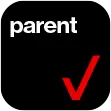- MenuAllNetworks & platformsProducts & plansResponsible businessPublic safetyFinancialNoticiasHoliday HubNews ReleasesMedia ContactsB-roll and imagesVerizon Fact SheetRSS FeedsEmergency ResourcesCable Facts
3 ways Latino families are talking about representation in media
National Hispanic Heritage Month is a great time to recognize the ways Latino families are discussing bilingualism, skin color and culture are portrayed in streaming and social media
Latino representation in TV, streaming and social media is at a pivotal point this year, with more streaming shows, movies and social media created by Latino voices. From Colón-Zayas’ historic Emmy win to online platforms like ¡Looking Bilingüe!, Historically underrepresented in American media, Latino representation is having a moment.
Research by the National Hispanic Media Coalition (NHMC) emphasizes that family conversations about authentic representation can help children critically engage with media and can boost connection to their heritage while addressing harmful stereotypes often perpetuated in films, TV and social media.
In honor of National Hispanic Heritage Month and to bring the conversation closer to Latino families, we spoke with Jade Cintrón Báez, bilingual theater and language educator and founder of ¡Looking Bilingüe!, so she could share her insights. Her advice can help start family conversations about three important issues in Latino media: language, colorism and cultural realism.
Here’s how parents can talk about these topics with their kids.
Language: Talking about how we speak
Language plays a big part in cultural identity. Recently, the hashtag #YoSabo became popular among Latino youth who don’t speak Spanish fluently. This term came after the phrase “No sabo kids” (“no sabo” being incorrect Spanish for “I don’t know”) was used to describe kids with limited Spanish skills. Today, kids have claimed “Yo sabo” as a way of responding to criticism about their language skills.
Cintrón Báez, a bilingual teacher, considers this mix of languages (often called Spanglish) to be a sign of intelligence and understanding. She explains that using both English and Spanish is a complex way to communicate, not a sign of losing one’s culture.
This cultural complexity of families’ blending languages when portrayed on TV can also indicate a lot about representation (or lack thereof) behind the camera. "Forcing language that is actually not natural to try to connect,” sends a signal for Cintrón Báez. “We know that you didn't have somebody like us writing this because we wouldn't have written that." On the other end of the spectrum, the best of today’s TV shows with Latino characters use language to provide cultural complexity.
Conversation starter: When something on TV doesn’t reflect how your family speaks, talk about what feels more authentic to your family’s way of communicating. Ask your kids, “How would we say this?”

Colorism: How skin tone is shown in media
Colorism, or discrimination based on skin tone especially within a racial or ethnic group, has been a problem in the media for a long time. Cintrón Báez recalls how, when she was growing up, people with darker skin in telenovelas were often cast as servants or enslaved people. She remembers thinking, “That person looks like me.”
Today, more Latino actors of different skin tones are represented in TV and movies, offering a wider variety of role models for kids. But there’s still work to be done. For example, a Peruvian opera singer on ¡Looking Bilingüe! shared how people encouraged him to use a headshot that made him look more ethnically ambiguous.
Conversation starter: When you see someone on TV who looks like your family, take the moment to recognize and discuss how this character is being portrayed. If a show makes you say, “Hey, this person is like us,” discuss what message the show is sending.
Cultural realism: Experiencing real stories on screen
Thanks to streaming platforms, there’s more diverse and realistic storytelling today. However, some old stereotypes still exist. But Cintrón Báez says she’s noticed positive changes, like more stories that show Latino joy, not just hardship.
It’s important for kids to perceive that while the Latino experience includes challenges, there’s also joy in everyday life. She believes this shift better represents the full spectrum of Latino family realities.
Conversation starter: Ask your kids how they feel about the stories they experience on TV. Start the conversation with curiosity, asking, “What do you think of how this show represents our culture?” Keep an open dialogue, even if the conversation doesn’t go perfectly.
Stay connected offline and keep them safe online with Smart Family.
Neil Mitchell is media consultant, focused on digital and online safety. He has been working with Verizon on online safety issues for over a decade.
Verizon's Parenting in a Digital World Portal publishes articles from a diverse set of authors with expertise across the digital safety spectrum. Contributors to the Portal are compensated by Verizon for their work.
Related Articles
Learn how to use the parental controls in your home internet router to manage screen time, filter content and set Wi-Fi schedules. Discover tips for every age group and device.